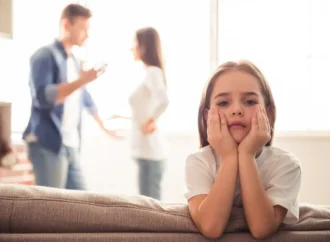Modern society tends to think that given enough education, job opportunities, and equality advancement a child will be able to lift himself out of poverty and enjoy a successful life as an adult.
But as a new study published by the Census Bureau shows, one of the greatest ways to lift children out of poverty is right under our noses – and we often seem to purposely overlook this solution because it doesn’t fit our politically correct version of the world.
This fact was recently underscored by New York Times columnist David Leonhardt. Assessing the Census Bureau study, Leonhardt noted that one of the best ways to lift children out of poverty is to have more two-parent families in a neighborhood. As he explains, “All else being equal — income, race, educational outcomes — children who grow up in neighborhoods with fewer two-parent families fare notably worse.”
This admission from Leonhardt is particularly interesting given his political background as a liberal. He notes:
“I want to highlight this result because I think that my half of the political spectrum — the left half — too often dismisses the importance of family structure. Partly out of a worthy desire to celebrate the heroism of single parents, progressives too often downplay family structure. Social science is usually messy, with correlation and causation difficult to separate. But the evidence, when viewed objectively, points strongly to the value of two-parent households (and, no, the parents don’t need to be heterosexual).”
Leonhardt goes on to note three common sense reasons children raised in neighborhoods with few two-parent families are so much more likely to remain in poverty:
“For one thing, households with only one parent simply earn less income, because they have fewer potential workers. For another, even after taking income into account, children from single-parent families do modestly worse than those from two-parent families. (Conservatives sometimes make the mistake of exaggerating this point.) Finally, as this new study found, neighborhoods with a lot of single-parent families tend to be less healthy places for all children.”
By contrast, children tend to fare better in neighborhoods with two-parent families, largely because they have more mentoring and support resources. This point is particularly interesting, as it echoes something scholar Charles Murray observed in his book, Coming Apart:
“[W]hen families become dysfunctional, or cease to form altogether, growing numbers of children suffer in ways that have little to do with lack of money. When communities are no longer bound by their members’ web of mutual obligations, the continuing human needs must be handed over to bureaucracies – the bluntest, clumsiest of all tools for giving people the kind of help they need. The neighborhood becomes a sterile place to live at best and, at worst, becomes the Hobbesian all-against-all free-fire zone that we have seen in some of our major cities.”
Pointing out the need for more traditional families is becoming increasingly unpopular and those who do so often risk charges of bigotry and discrimination. But given the observations of studies, as well as those on the left and right, does this attitude need to change? Are we actually more bigoted and discriminatory toward children when we refuse to promote the traditional two-parent family?
—
Dear Readers,
Big Tech is suppressing our reach, refusing to let us advertise and squelching our ability to serve up a steady diet of truth and ideas. Help us fight back by becoming a member for just $5 a month and then join the discussion on Parler @CharlemagneInstitute and Gab @CharlemagneInstitute!
Image Credit:
U.S. Air Force photo/Staff Sgt. Levi Riendeau
















1 Comment
Bubba McCloski
October 4, 2023, 9:48 amgrowing up in the 50's I didn't have a father but the other kids did. I adopted a good friends dad for mine. I remember when I was going to Vietnam he took me out for a beer at his watering hole. I was too young and he left the bar and he told me later he did not return until I had come back home. I miss you Harvy.
REPLY